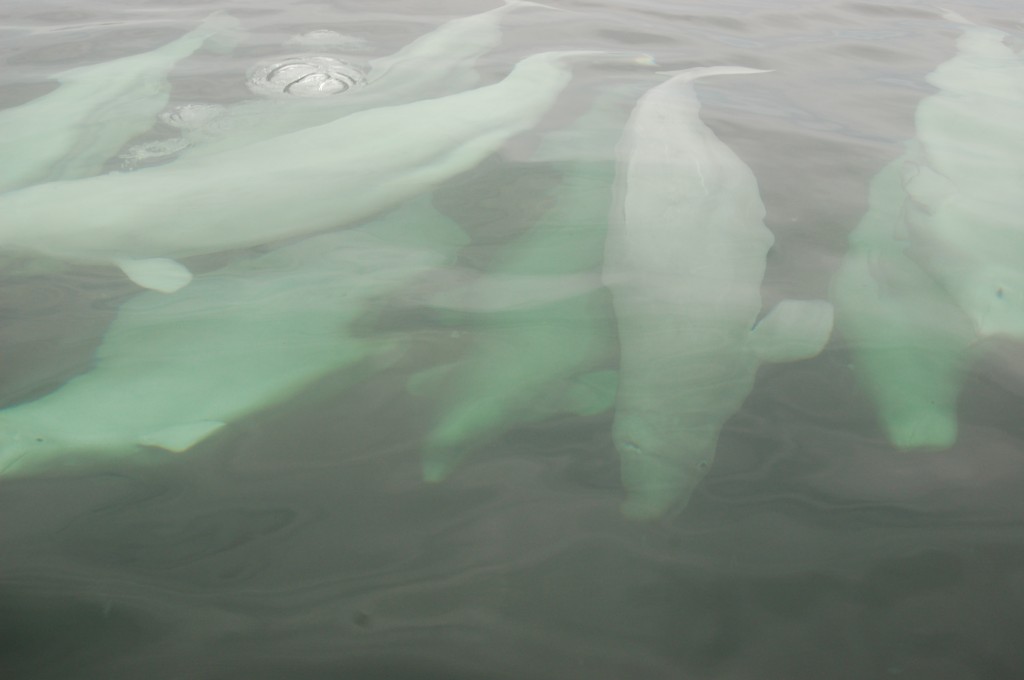The main food source in Churchill and surrounding estuaries in the Arctic summer is capelin. What is capelin you might ask? A small fish slightly larger in size though similar in appearance to smelt. Capelin will amass in schools of thousands and move through the water in a massive wave. Beluga whales periodically feed during the capelin run and will focus solely on the process until they are sufficiently sated. When belugas are feeding as a pod they will be completely synchronized in the water and oblivious to any whale watching vessels. Birds such as Arctic terns and Bonaparte gulls are tell tale harbingers of beluga feeding sessions as they hover overhead and dive to capture the fish pushed to the water’s surface. Once feeding time is over belugas will typically return to their curious, gregarious ways and approach boats or kayaks on the water.
Capelin schools are the most plentiful food source that belugas can feed on. The whales also scavenge mollusks and singular organisms in the water but to survive the energy constraints of frigid Arctic waters and stress of navigating ice and shoals, the mass feedings on thousands of capelin ease the strain of the harsh northern conditions.

Beluga whales feeding on capelin in the clear, cold water of the mouth of the Churchill River. Steve Selden photo.
Capelin spawn on the gravelly bottoms of shoreline and rivers close to tide-lines and many typically end up stranded along coastal beaches. During the apex of the fish run beaches can be covered with the small species.


